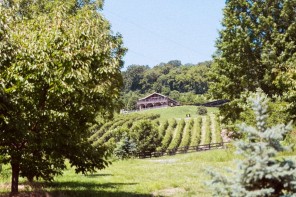Back in the day, if you were a wine tourist, you were one of two types of people: you were either an exclusive wine journalist or wine critic with refined taste and access to some of the most desirable wineries in the world. Or, you were a wandering drunk, in search of your next pour, and simply up for a good vacation.
Today, if you’re a wine tourist, you’re slightly different. You’d rather explore the unknown wine regions of Spain rather than the chateaux of Burgundy, you’re interested in immersing yourself in the local culture and chatting with brilliant winemakers, and you take Uber.
[pullquote align=”right” cite=”” link=”” color=”#0396ec” class=”” size=””]Not sure if you heard, but an entire generation just turned 21, and they’re breaking into the wine scene with force.[/pullquote]Wine tourism has changed over the past few decades, and over the past 10 years, more and more people are calling themselves wine tourists. In her extensive research, Dr. Liz Thach, a distinguished professor of wine and a professor of management at Sonoma State University, sees the new wine tourist as one who wants to “taste new wines, learn about them, and see how the wine is made.”
After that distinction, the motivations for wine tourists vary greatly – by region, age and interest, among other factors. While some travel to wine country to get away from the fast pace of everyday life, some travel for the sweeping vineyard views, and some because it’s a fun activity to do with friends. There’s also a growing interest in agriculture and green travel that’s drawing wine tourists into tasting rooms.
Tourism in general has been steadily increasing over the past few years. International tourism is expected to increase by 3.3 percent between 2010 and 2030, with 1.8 billion tourist arrivals predicted in 2030.
Wine travel is on the rise as well, and tasting rooms are seeing more visitors than ever before. A Wine Institute survey from 2015 found that California’s wine business contributes $114.1 billion each year to the U.S. economy, after a growth of 17 percent over the past seven years. And 90 percent of wineries around the world agree that wine and food tourism is a critical part of their business.
What’s different?
Not sure if you heard, but an entire generation just turned 21, and they’re breaking into the wine scene with force. That doesn’t just mean they’re drinking more bottles at home watching Scandal. It also means they’re the world’s newest wine tourists.
Millennials are 23 percent more likely to travel abroad than older generations, and they’re interested in landing in off-the-beaten path destinations, eating local cuisine, visiting different cultures, and creating unique experiences to take home with them. Most millennials – 78 percent – prefer to spend their money on experiences instead of on stuff, and they’re even forgoing partying and shopping abroad for immersive cultural experiences.
Millennials are propelling a new kind of travel, and they’re growing their taste for wine. The combination points to an obvious growth in wine travel among this adventurous age set. The correlation between love for wine and wine travel is inextricable. The more a person cares about wine, the more likely they are to grab their passport and go visit wineries. Millennials, who are now drinking nearly half of the wine in the United States, are a driving force in wine tourism. In a 2015 national survey by Sonoma State University, Dr. Liz Thach found that 30 percent of millennials said they had traveled to wineries to taste wine, while only 18 percent of Gen X-ers and 17 percent of Boomers said the same.
So where are millennials going to taste all this fabulous wine? For now, it’s Spain and Italy. But with more than 65 countries around the world making wine, and the millennial’s penchant for all things obscure, who knows which destination is next.








